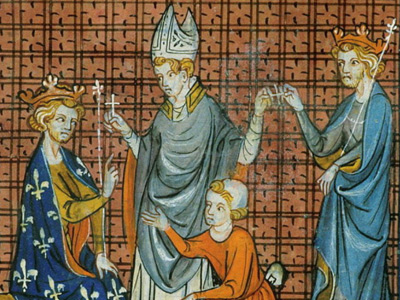Third Crusade (1189–1192)
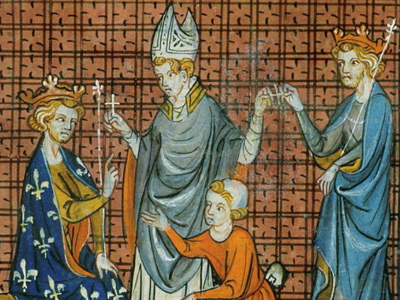
The Third Crusade (1189–1192), also known as The Kings' Crusade, was an attempt by European leaders to reconquer the Holy Land from Saladin. The campaign was largely successful in capturing the important cities of Acre and Jaffa, and reversing most of Saladin's conquests, but it failed to capture Jerusalem, the emotional and spiritual motivation of the Crusade.
After the failure of the Second Crusade, the Zengid dynasty controlled a unified Syria and engaged in a conflict with the Fatimid rulers of Egypt. The Egyptian and Syrian forces were ultimately unified under Saladin, who employed them to reduce the Christian states and recapture Jerusalem in 1187. Spurred by religious zeal, King Henry II of England The Kingdom of England was a sovereign state on the island of Great Britain from about 927, when it emerged from various Anglo-Saxon kingdoms, until 1 May 1707, when it united with Scotland to form the Kingdom of Great Britain. The Viking invasions of the 9th century upset the balance of power between the English kingdoms, and native Anglo-Saxon life in general. The English lands were unified in the 10th century in a reconquest completed by King Æthelstan in 927. and King Philip II of France
The Kingdom of England was a sovereign state on the island of Great Britain from about 927, when it emerged from various Anglo-Saxon kingdoms, until 1 May 1707, when it united with Scotland to form the Kingdom of Great Britain. The Viking invasions of the 9th century upset the balance of power between the English kingdoms, and native Anglo-Saxon life in general. The English lands were unified in the 10th century in a reconquest completed by King Æthelstan in 927. and King Philip II of France The Kingdom of France is the historiographical name or umbrella term given to various political entities of France in the medieval and early modern period. It was one of the most powerful states in Europe since the High Middle Ages. It was also an early colonial power, with possessions around the world. Colonial conflicts with Great Britain led to the loss of much of its North American holdings by 1763. The Kingdom of France adopted a written constitution in 1791, but the Kingdom was abolished a year later and replaced with the First French Republic. (known as Philip Augustus) ended their conflict with each other to lead a new crusade. The death of Henry in 1189, however, meant the English contingent came under the command of his successor, King Richard I of England (known as Richard the Lionheart, in French Cœur de Lion). The elderly Holy Roman
The Kingdom of France is the historiographical name or umbrella term given to various political entities of France in the medieval and early modern period. It was one of the most powerful states in Europe since the High Middle Ages. It was also an early colonial power, with possessions around the world. Colonial conflicts with Great Britain led to the loss of much of its North American holdings by 1763. The Kingdom of France adopted a written constitution in 1791, but the Kingdom was abolished a year later and replaced with the First French Republic. (known as Philip Augustus) ended their conflict with each other to lead a new crusade. The death of Henry in 1189, however, meant the English contingent came under the command of his successor, King Richard I of England (known as Richard the Lionheart, in French Cœur de Lion). The elderly Holy Roman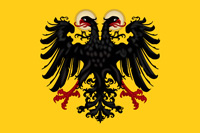 The Holy Roman Empire was a political entity in Western, Central, and Southern Europe that developed during the Early Middle Ages and continued until its dissolution in 1806 during the Napoleonic Wars. From the accession of Otto I in 962 until the twelfth century, the Empire was the most powerful monarchy in Europe. The empire reached the apex of territorial expansion and power in the mid-thirteenth century, but overextending led to partial collapse. Emperor Frederick Barbarossa also responded to the call to arms, leading a massive army across Anatolia, but he drowned in a river in Asia Minor on 10 June 1190 before reaching the Holy Land. His death caused tremendous grief among the German Crusaders, and most of his troops returned home.
The Holy Roman Empire was a political entity in Western, Central, and Southern Europe that developed during the Early Middle Ages and continued until its dissolution in 1806 during the Napoleonic Wars. From the accession of Otto I in 962 until the twelfth century, the Empire was the most powerful monarchy in Europe. The empire reached the apex of territorial expansion and power in the mid-thirteenth century, but overextending led to partial collapse. Emperor Frederick Barbarossa also responded to the call to arms, leading a massive army across Anatolia, but he drowned in a river in Asia Minor on 10 June 1190 before reaching the Holy Land. His death caused tremendous grief among the German Crusaders, and most of his troops returned home.
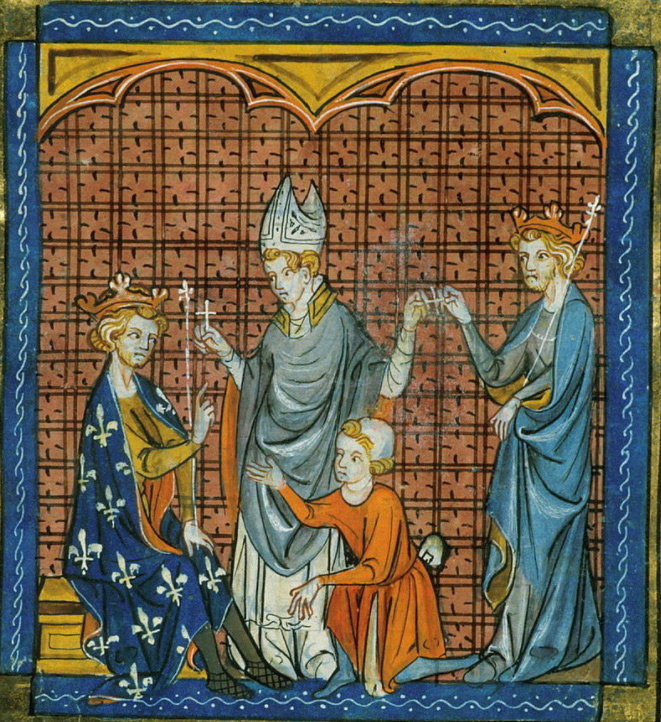
Early 14th-century depiction of Henry and Philip Augustus taking the cross for the Third Crusade
After the Crusaders had driven the Muslims from Acre, Philip in company with Frederick's successor, Leopold V, Duke of Austria (known as Leopold the Virtuous), left the Holy Land in August 1191. On 2 September 1192, Richard and Saladin finalized a treaty granting Muslim control over Jerusalem but allowing unarmed Christian pilgrims and merchants to visit the city. Richard departed the Holy Land on 9 October. The successes of the Third Crusade allowed the Crusaders to maintain considerable states in Cyprus and on the Syrian coast. However, the failure to recapture Jerusalem would lead to the Fourth Crusade.
HISTORY
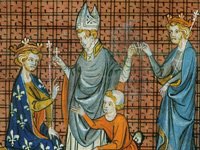
RESOURCES
This article uses material from the Wikipedia article "Third Crusade (1189–1192)", which is released under the Creative Commons Attribution-Share-Alike License 3.0.
© Stories Preschool. All Rights Reserved.
